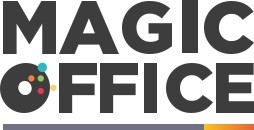
Understanding Digitally Managed Catalogs
Exploring the Concept of Digitally Managed Catalogs
In today's fast-paced business environment, understanding digitally managed catalogs is crucial for companies looking to streamline their procurement processes. These catalogs serve as a centralized platform where buyers and suppliers can efficiently manage product data, stock levels, and pricing information. By integrating a yearly purpose planner, businesses can align their procurement strategies with long-term goals.
Digitally managed catalogs come in two main forms: hosted catalogs and punchout catalogs. Hosted catalogs are maintained on the supplier's website, allowing real-time updates and ensuring that buyers have access to the most current product information. Punchout catalogs, on the other hand, connect directly to the supplier's procurement system, enabling seamless transactions and reducing the time spent on manual purchase orders.
These systems are designed to enhance the buyer-supplier relationship by providing a transparent view of available products and their pricing. This transparency is essential for effective inventory management and helps businesses make informed purchasing decisions. By leveraging procurement software, companies can automate various aspects of catalog management, leading to significant time savings and improved operational efficiency.
As we delve into the benefits and implementation strategies of digitally managed catalogs, it becomes evident that their role in modern procurement cannot be overstated. They not only facilitate better communication between buyers and suppliers but also contribute to a more efficient supply chain.
Benefits of Digitally Managed Catalogs
Advantages of Digitally Managed Catalogs
Digitally managed catalogs have revolutionized the way businesses handle procurement, offering a myriad of advantages that contribute to enhanced efficiency and cost savings. Here's a breakdown of the key benefits:- Streamlined Procurement Processes: The integration of digitally managed catalogs into a procurement system allows for seamless catalog punchout functionality. This means buyers can access supplier websites directly from the catalog interface, simplifying the purchase order process. With hosted catalogs and real-time data synchronization, businesses benefit from accurate stock levels, reducing delays in supply chain management.
- Improved Data Management: Digital catalogs provide a centralized repository for all product information, vendor details, and pricing data. This enhances product catalog management and ensures that buyers have access to updated information, minimizing the risk of purchase errors. The use of procurement software facilitates easy tracking of purchase orders and buyer-supplier interactions.
- Cost-Effectiveness: With accurate, real-time product and pricing data at their fingertips, buyers make more informed purchasing decisions. This reduces unnecessary expenditures and optimizes inventory management. As a result, businesses see improved bottom lines through better procurement practices.
- Enhanced Supplier Collaboration: Through a digitally managed catalog system, the relationship between buyers and suppliers is strengthened. Businesses can keep track of supplier performance and proactively manage supplier catalogs. This cooperation saves time and fosters a smooth procurement experience.
- Time Efficiency: The use of punchout catalogs allows for automated processes, reducing manual tasks significantly. This efficiency saves valuable time for procurement teams, who can then focus on strategic initiatives rather than administrative tasks.
Implementing Digitally Managed Catalogs in Your Office
Streamlining Your Office Processes
Implementing digitally managed catalogs in your office can significantly streamline various processes. To ensure a smooth transition, consider these essential steps:- Evaluate Your Current Procurement System: Take stock of your existing procurement system and identify areas that need improvement. Determine how a hosted catalog or punchout catalog can address these gaps.
- Choose the Right Software: Select procurement software that integrates seamlessly with your existing systems. This will enable a real-time data exchange, helping you keep track of stock levels and pricing directly from your suppliers.
- Engage Suppliers: Communicate with your suppliers about transitioning to digital catalogs. Ensure they provide updated product information and are ready for any catalog pros or management changes this shift entails.
- Train Your Team: Equip your buyers with the necessary skills to navigate the new catalog management system. Comprehensive training on using punchout catalogs and accessing supplier websites will enhance their efficiency.
- Monitor and Adjust: Post-implementation, continuously evaluate the system's effectiveness. Monitor buyer procurement activities, purchase order processing, and inventory management to ensure alignment with your business goals.
Overcoming Challenges with Digitally Managed Catalogs
Embracing Digital Solutions: Common Hurdles and How to Navigate Them
Transitioning to digitally managed catalogs can present several challenges, but with the right approach, businesses can effectively overcome them.- Integration with Existing Systems: One of the primary challenges is integrating the new catalog management system with existing procurement software. Ensure compatibility between systems, allowing seamless exchange of data and enhancing the buyer-supplier relationship.
- Data Accuracy and Consistency: Maintaining accurate and consistent data across punchout catalogs and hosted catalogs is essential. Regular updates and clear communication with suppliers regarding stock levels and pricing will help keep your catalog accurate and reliable.
- Supplier Engagement and Adoption: Convincing suppliers to adopt the new system can be difficult. Provide comprehensive training and highlight the benefits of real-time data and inventory management through catalogs hosted on your system to secure their cooperation.
- Technical Challenges: Implementation may require overcoming technical hurdles such as catalog punchout integration and updating IT infrastructure. Engaging a knowledgeable IT team or consulting with experts can make this transition smoother.
- Adapting to Change: Employees may be hesitant to change. To ease this, involve them in the transition process and offer training to demonstrate how procurement efficiency is enhanced, optimizing purchase orders and fulfilling buyer procurement requests effectively.
Case Studies: Success Stories from UK Companies
Real-World Success: Digitally Managed Catalogs in UK Companies
The journey of integrating digitally managed catalogs in the business landscape has been transformative for several companies across the United Kingdom. These organizations have seen substantial improvements in procurement efficiency, inventory management, and cost-effectiveness.
Streamlining Procurement with Hosted and Punchout Catalogs
UK companies have utilized hosted and punchout catalogs to revolutionize their procurement processes. By connecting buyer procurement systems directly to supplier websites, these businesses can access real-time data and product availability. This ensures that stock levels are accurately reflected, reducing the chances of overordering or stockouts, which further streamlines the purchase order process.
Cost Savings and Time Efficiency
The implementation of procurement software that supports digitally managed catalogs has enabled businesses to negotiate better pricing with suppliers. The real-time information available through the catalogs hosted directly influences negotiations by providing up-to-date pricing and product information. Moreover, the system allows buyers to execute purchase orders with greater speed and accuracy, effectively saving time for the entire supply chain.
Improved Buyer-Supplier Relationships
By employing a catalog management system, companies have strengthened their buyer-supplier relationships. The seamless integration of hosted catalogs and punchout catalogs has facilitated easier communication and procurement, thereby enhancing trust and collaboration within the supply chain. Suppliers are better able to manage their inventory and provide accurate, timely information, leading to improved service and satisfaction.
Enhanced Data Management
Data management is a significant advantage of digitally managed catalogs. Many UK businesses have leveraged the capabilities of catalog management systems to analyze procurement trends, monitor supplier performance, and track product preferences. This data-centric approach allows for informed decision-making, facilitating strategic business growth and efficient product management.
These case studies illuminate the transformative impact of digitally managed catalogs on UK companies, showcasing real-world success stories that inspire further adoption and innovation in catalog procurement systems.













